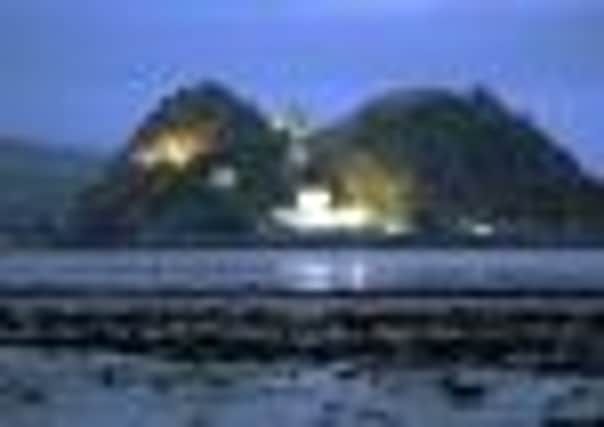Don’t wipe graffiti off volcanic rock, demand climbers


Dumbarton Rock – topped by Dumbarton Castle – is home to some of the most challenging climbing routes in the world.
Historic Scotland, which looks after the site, wants to remove graffiti that covers the rock and nearby boulders in response to “local concern”.
Advertisement
Hide AdAdvertisement
Hide AdThe Mountaineering Council of Scotland (MCofS) has expressed concerns, however. The organisation, which has 11,000 members, said removing the paint could damage delicate holds on bouldering and climbing routes, and that some graffiti dating back to the 1950s is now enshrined in the area’s climbing culture and heritage.
Historic Scotland said yesterday they will meet the climbers on site to reach a solution.
The rock, on the north bank of the Clyde, has been an attraction for climbers and boulderers since the 1950s.
The main face has almost 50 climbing routes, rated from “very difficult” upwards. In 1983, climber Dave Cuthbertson completed a route called “Rhapsody”, graded extreme eight, at the time the hardest in the world. And, in 2006, Dave MacLeod climbed the extreme 11 route he called “Requiem”. The feat is said to have “effectively stretched the limit of extreme climbing”.
MCofS chief officer David Gibson said: “We recognise that Historic Scotland has the highest levels of expertise in the restoration of monuments.
“However, the nature of some of the holds on the boulders may mean that even minimal abrasion could result in damage that would be irreversible.
“We believe the best solution would be for a MCofS representative and a climber who knows the bouldering problems in the area to be present at a test and to confirm that no damage to the holds would be possible as a result of the planned treatment.”
The graffiti includes not only people’s initials, football team names and swear words, but the faded remains of a lion rampant, on Eagle Boulder, and a poem about justice, on Home Rule Boulder.
Advertisement
Hide AdAdvertisement
Hide AdHistoric Scotland stone conservation specialists had begun scoping out cleaning methods to remove paint from the dense igneous stone when the climbers’ concerns emerged.
Director of conservation David Mitchell said he had been “amazed” to learn about Dumbarton Rock’s importance in climbing history.
He said: “It’s been a bit of an eye-opener. We have specialist stone conservators, some of the best in the UK, who deal with this kind of stuff right across the country on iconic historic sites.
“So, we’re not heavy-handed. We’re very cautious. I’m fairly relaxed that we can come to a good solution, for all concerned.”